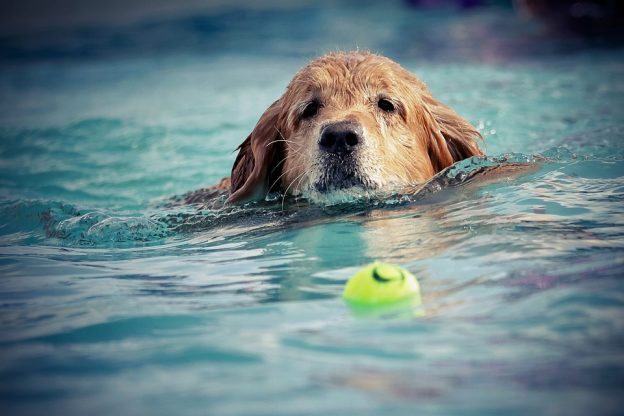
Many dogs love getting their paws wet in the warmer months, but there are things to know before you let your dog take to water. By Carrol Baker.
Having fun in the sun and taking your four-legged friend swimming is one of the best things about the long lazy days of summer. Most dogs love being around water, too. They romp and run, catch a few balls, ride a few beach breaks, sniff a few doggie bottoms and make some new canine buds.
But not all dogs enjoy water, and not all dogs can swim. Sharon Osmond from K9 Swim Hydrotherapy Centre says responsible pet ownership not only means keeping your dog safe around water, but also taking steps to teach it how to swim.
“There are so many dogs in Australia and so many waterways,” she says. “It really is important to get your dog swimming as early as possible so it is confident and comfortable in the water. Despite popular belief, it isn’t something that comes naturally to all dogs.”
Making it fun
The key to success is making being in and around water a pleasurable and safe experience so your dog will be eager to get back in the water again.
“Take it very slowly and start at a calm, still body of water, such as a lake or a swimming pool,” Sharon says. Pop on a buoyancy jacket to give the dog confidence and allow your puppy to walk in the water, to feel the sensation and movement of the water around it. Always keep control of the situation.
“My advice is to always take it slowly, build up your sessions in the water, and make it enjoyable by putting a few toys in the water. Then reward your dog with playtime after a pool session and with a treat so it becomes a positive experience,” she says.
Staying safe
While your dog is learning to swim, stand alongside it, holding onto the buoyancy jacket. “A dog’s natural instinct will be to paddle towards you,” says Sharon. “Don’t be in front of your dog; if it panics it can take you under the water as well.”
Don’t ever throw or push a reluctant dog into the water. You may think it’s harmless fun, or that jumping in paws first will help it to get over its fear, but it will only make matters worse.
Some big dogs like Great Danes, and dogs with long bodies like Dachshunds, will find it challenging to swim because of their physiological make-up. However, it is not impossible. With time and patience most dogs will learn — some just might not be as proficient as others.
Above all, if your dog is reluctant to get in the water, be patient and don’t give up. Often it’s about building confidence and your pet looking to you for reassurance.
The ins and outs
Dogs drown in backyard pools, ponds and dams, mostly because they fall in and can’t get out again. Anecdotal evidence gathered a few years ago by Murdoch University Pet Emergency Centre discovered up to 200 dogs a year drown in Perth. If you add up the other states and territories, it’s a frightening statistic.
If you have a backyard pool, dam or pond, your dog needs a place to be able to exit the pool safely. Sharon says it can be challenging for smaller breeds to negotiate pool steps. “They are often too high and widely spaced apart for dogs,” she says. There are ramps specially designed for dogs you can purchase that help a dog enter and exit the pool.
Avoiding hazards
Before you head down to the beach, always make sure you check the sand isn’t too hot (or it will burn paw pads), and carry doggie sunblock and plenty of fresh cool water to drink.
There are also safety issues to consider, including water hazards such as rips, bluebottles or dangerous undertow. Before entering the water, always check with lifesavers for surf conditions.
Sharon says one of the biggest safety issues for canines is fatigue. “People think dogs can swim for hours, but they get tired. They get sore muscles and could develop lactic acid build-up,” she says. “A five-minute swim is equivalent to a five-kilometre walk.” If your dog is looking stressed, tired or uncomfortable, exit the water and take it to a cool, shady spot to rest.
Also take care when tossing sticks in the water. They can splinter and cause injuries. If your dog is chasing balls or sticks in the surf, or in calm waters, it may also ingest large volumes of water or pick up a gastrointestinal infection, warns Sharon, which could cause vomiting or diarrhoea.
Health benefits of swimming
Sharon Osmond from K9 Swim Hydrotherapy Centre says taking to the water with your pooch has many health benefits. Swimming in warm water can help with hip or elbow dysplasia, arthritis, or if a dog has had orthopaedic surgery. “Swimming is also great for weight reduction, strengthening, conditioning, and can burn off excess energy.”
Make sure your furry friend is always looked after at our DOGSLife Directory



